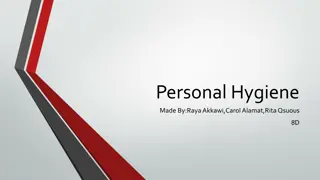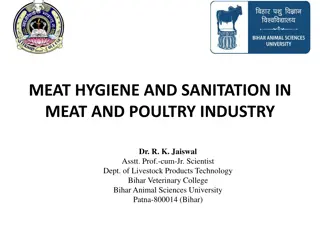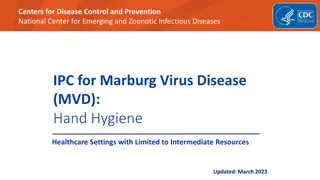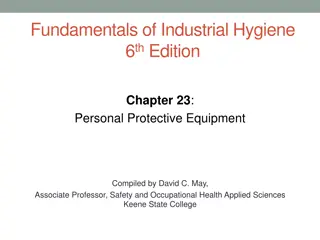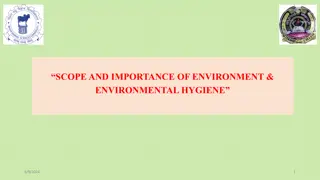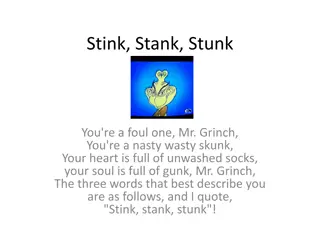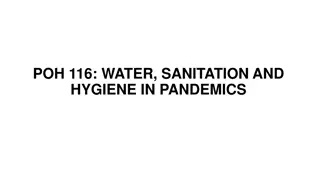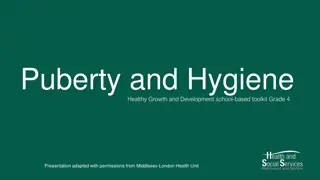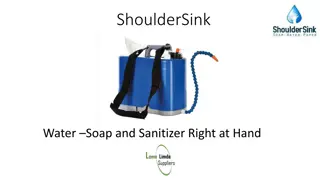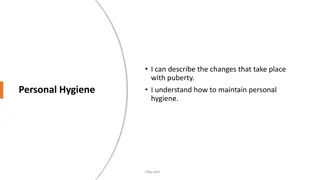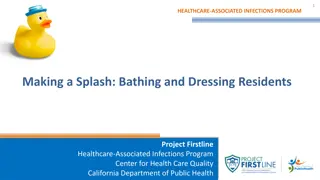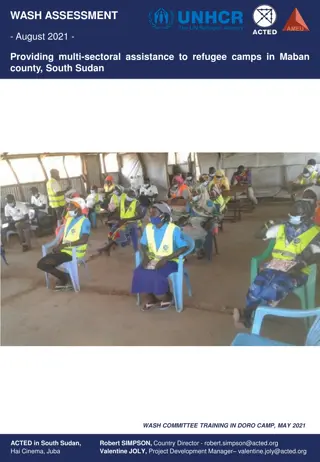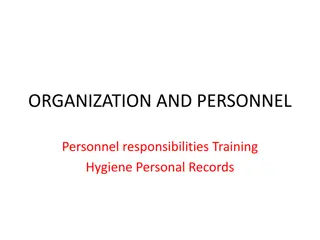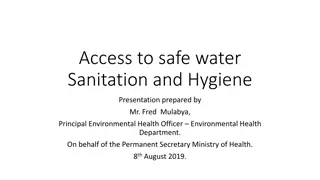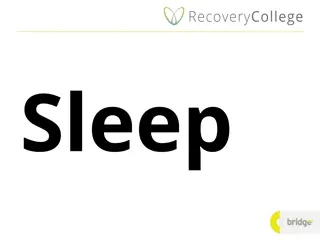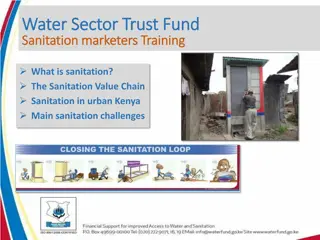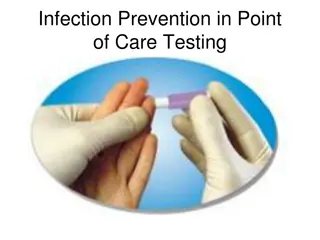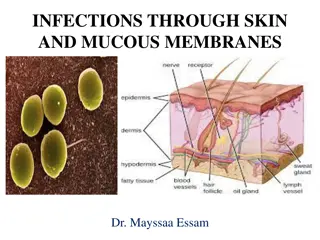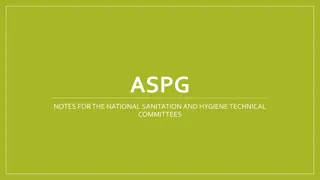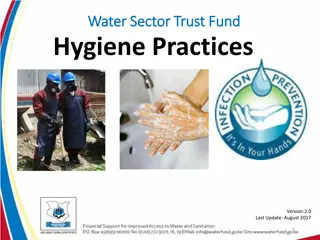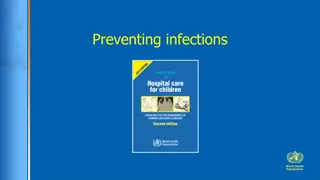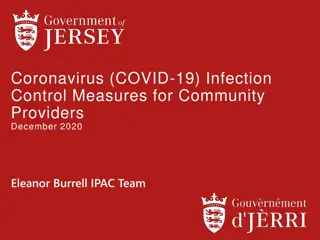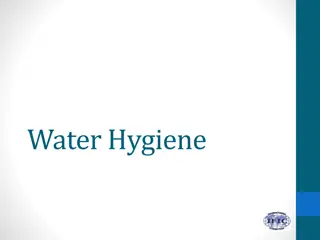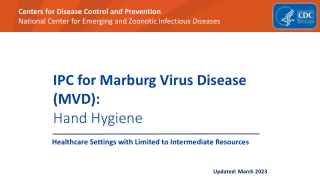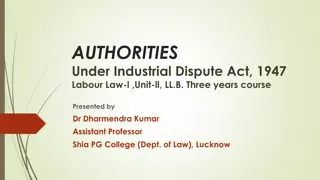Industrial Hygiene Program: Fundamentals and Components
Explore the Industrial Hygiene Program (IHP) focusing on risk management, workplace safety, and health preservation. Learn about its importance, benefits, and key components like management commitment, hazard recognition, and systems-oriented approach. Enhance your understanding of creating a safe work environment and promoting employee well-being.
Download Presentation

Please find below an Image/Link to download the presentation.
The content on the website is provided AS IS for your information and personal use only. It may not be sold, licensed, or shared on other websites without obtaining consent from the author. Download presentation by click this link. If you encounter any issues during the download, it is possible that the publisher has removed the file from their server.
E N D
Presentation Transcript
Part IV: Occupational Health & Safety Professions Chapter 29: Industrial Hygiene Program Compiled by Janvier Gasana Associate Professor, Environmental & Occupational Health Florida International University
Fundamentals of Industrial Hygiene 6th Edition Chapter 28: The Industrial Hygiene Program Compiled by Janvier Gasana Associate Professor, Environmental and Occupational Health Florida International University
The Industrial Hygiene Program (IHP) IHP is the culmination of the understanding of the risks and hazards in the workplace, the processes required to control these risks, and the commitment of resources to provide a safe work environment. In addition to preventing occupational injury and disease, the program also offers benefits to the organization by reducing costs, increasing productivity, and improving employee morale and brand image. It is important to recognize the need for the right level of skills required to establish an effective program.
Components of an IHP Traditionally, the program begins with: Management Commitment to Employee Safety (Policy Statement) Hazard Recognition & Identification Control & Mitigation (e.g. Employee training & education) Exposure Evaluation & Risk Assessment Audit or Program Evaluation
Components of an IHP (cont.) IHP has been enhanced through a more systems-oriented approach In 1989, OSHA promoted use of the systems approach by issuing its Program Management Guidelines leveraging success of its Voluntary Protection Program British Standards Institute issued its BS 8800 Guide to Occupational Health and Safety Management Systems, followed by the Occupational Health and Safety Series 18001 Occupational Health and Safety Management Systems, and the American National Standards Institute/American Industrial Hygiene Association (ANSI/AIHA) Z10 Occupational Health and Safety Management Systems standard These approaches share a similar design concept by placing the IH program into framework that includes policy development, management and employee participation, planning, implementation, and checking and corrective action
Components of an IHP (cont.) The format of the program, whether it is traditional or systems oriented, likely depends on a variety of factors: size and type of the organization management philosophy range of occupational hazards at the facility available health and safety resources
Benefits of an IHP Provide a place of employment in which employees are protected from known occupational health hazards at the workplace Compensable injuries or illnesses are reduced, lowering insurance premiums and associated medical and recordkeeping costs Productivity is increased by improving working conditions, which improves morale and labor relations and reduces lost time from accidents, illnesses, and absenteeism Operating costs reduced by anticipating and controlling potential occupational health hazards during the design phase of new projects and changes OSHA and other government regulations concerning industrial hygiene are quickly assessed and implemented
Establishing an IHP Elements of an IH program The industrial hygiene program can be subdivided into individual programs or processes, each with its own set of requirements and procedures.
Establishing an IHP (cont.) The policy statement A policy publicly states a company s commitment to employee health and safety. The policy should reflect management s commitment and the importance the organization places on the health and safety of its employees compliance with all federal, state, and local regulations and internal company safety and health requirements the necessity for active leadership, direct participation, and the enthusiastic support of the entire organization
Establishing an IHP (cont.) Planning activities: setting goals and objectives The establishment of a strategic plan for long- and short-range goals and objectives is vital to the development of an effective industrial hygiene program. These goals and objectives should also be part of the written program. They are often established by a team, such as a joint labor management health and safety committee. A goal is a desired outcome, whereas an objective is a specific activity or means of achieving a goal. Objectives should be realistic and, when possible, measurable In all cases, objectives should be directed at fixing the root or underlying cause of an issue. Goals and objectives should not be static they should be evaluated and updated on a regularly scheduled basis. As conditions change, new issues or improvement opportunities should be prioritized and new goals and objectives set.
Establishing an IHP (cont.) Hazard recognition and evaluation Considered one of the first tenets of industrial hygiene A process must be adopted to anticipate and recognize health hazards in order to identify the potential health and safety risks in the work environment. An assessment is made that includes use of chemicals, equipment, operating procedures, work practices, and available controls An evaluation, or risk assessment, is then conducted to determine if the real or potential exposures to these hazards are acceptable or if additional engineering or administrative controls or personal protective equipment is necessary.
Establishing an IHP (cont.) Exposure assessment program is used to determine potential and actual exposures and then use that information to minimize the risks of adverse health effects potentially affecting employees. This program also helps demonstrate compliance with legal and internal company requirements and provides an avenue for employee communication regarding the safety of their work environment. Numerous techniques for conducting these assessments. One such method is described in the American Industrial Hygiene Association (AIHA) publication, A Strategy for Assessing and Managing Occupational Exposures. The following information is collected during the initial steps of this process: Workplace characterization Work force characterization Agent Characterization
Establishing an IHP (cont.) Once characterized, the evaluation step begins: Evaluation Reevaluation A written procedure is necessary to ensure that samples are collected in a proper, consistent, and professionally accepted manner. Procedures should include information on sampling methodologies, calibration, field use and maintenance of the equipment, quality control, use of approved or accredited laboratories, and the chain of custody to ensure proper handling.
Establishing an IHP (cont.) Hazard control Measures must be taken to eliminate or reduce exposures whenever there is unacceptable risk based on standards and professional judgment. Employee training and education An important element of administrative controls is the awareness and knowledge of the potential hazards, health risks, and the work practices required to ensure employee safety. Proper education must be provided relevant to the roles and responsibilities each worker has in the process
Establishing an IHP (cont.) Training has become a standard part of most OSHA regulations. There is an element of training, education, and awareness ranging from labels and postings to classes and certifications. The method (e.g., labeling versus classroom training) chosen for employee education depends on the type and degree of the hazard, which should be part of the assessment and recommendation provided by the industrial hygienist.
Establishing an IHP (cont.) The following summary was taken from Training Requirements in OSHA Standards and Training Guidelines (OSHA, 1998) and provides guidance for establishing training: Determine if training is needed Identify training needs Identify goals and objectives Develop learning activities Conduct training Evaluate program effectiveness Improving the program
Establishing an IHP (cont.) Employee involvement No program is complete without opportunities for employee participation in the processes affecting their health and safety.
Establishing an IHP (cont.) Documentation/recordkeeping Good industrial hygiene practice includes proper documentation that describes how the program is implemented, what is done, and who does it.
Establishing an IHP (cont.) Program evaluation and program audit The scope of an audit depends on the objectives and the allocated time and resources. Auditors prepare by researching requirements and obtaining documentation of the program to establish a plan for the review. Audit checklists are often developed to guide and focus the collection of information.
Establishing an IHP (cont.) 5 phases of an audit: 1. Opening conference with the management of the facility, during which the purpose, scope, and schedule of the audit is discussed. 2. Information is gathered. 3. Information is analyzed, key facts confirmed, and contradictions resolved. During this phase, the auditor can usually generalize from specific situations to underlying program or system deficiencies. 4. Auditors present their findings to management during a closing conference, at which time any remaining concerns can be discussed. 5. A report of findings is issued.
Organizational Responsibilities In a management system for occupational health and safety, all parts of the organization work together to ensure the success of the health and safety program. The industrial hygiene program is a part of this system. Roles and responsibilities must be clearly defined, communicated, and accepted. Health and safety is a shared responsibility from management to employees and includes the following functional groups.
Organizational Responsibilities (cont.) Safety Safety professionals and industrial hygienists are typically in the same department and share the same goal for maintaining a safe and healthful work environment. Safety professionals tend to focus on physical hazards that may cause injury, such as electrical, mechanical, and fire/life safety. However, there is often cross over between both disciplines and the same individual may be charged with responsibilities in both fields of practice.
Organizational Responsibilities (cont.) Medical Occupational health services include programs designed to promote the health of the work force and prevent occupational and nonoccupational disease and injury. A large corporation may have a full-time staff equipped with a clinic. Smaller employers may use a nearby occupational health clinic. The following activities may be covered under the medical program: health examinations medical or biological monitoring diagnosis and treatment medical case management health education and counselling wellness activities medical recordkeeping
Organizational Responsibilities (cont.) Engineering Engineers are involved with the design and modification of equipment, manufacturing, and facilities. New or modified processes potentially introduce health and safety hazards and risks into the work environment. To control these risks, engineers work with industrial hygienists to design proper engineering controls and maintenance procedures.
Organizational Responsibilities (cont.) Purchasing Purchasing is important because it is often the first department to see new orders for materials and equipment. Prior to ordering and receipt, industrial hygiene should provide safety criteria to the purchasing department to ensure the proper reviews have been conducted and the materials and equipment ordered can be used in a safe manner. Requirements should include obtaining material safety data sheets and other safety information.
Organizational Responsibilities (cont.) Top Management Managers and Supervisors Top management includes general managers, presidents, chief executive officers, and vice presidents who have the ultimate responsibility for employee safety, including the provision for adequate health and safety resources. They must ensure that their organizations comply with applicable corporate policies and government regulations and may look to industrial hygienists to provide advice and counsel. Managers and supervisors provide direct oversight over the day-to-day activities and typically control work schedules. They serve an important role ensuring the use and availability of safe work practices and working conditions.
Organizational Responsibilities (cont.) Employees Every employee has the responsibility to perform work in a manner that ensures their own personal safety as well as the safety of their fellow employees. Employee responsibilities include following the health and safety rules, properly using and maintaining personal protective equipment and other safety devices, maintaining their work area in a neat and clean manner, and notifying their supervisor when observing hazardous work conditions, work practices, accidents, and near misses.
Organizational Responsibilities (cont.) Health and safety committee Health and safety committees are a good way to maintain focus on workplace safety. They provide a forum for securing cooperation, coordination, and the exchange of ideas to maintain and improve health and safety. The committee typically has three major functions: 1. examining company safety and health issues and recommending changes in practices or policies to management 2. conducting periodic workplace inspections 3. evaluating and promoting interest in the program


